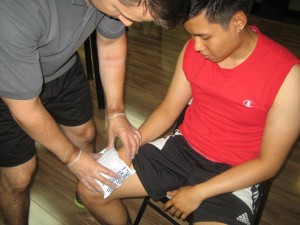Abrasions affect the superficial skin layer which is typically due to trauma such as a fall where the skin surface has been scraped away.
This skin wound exposes the deep skin structures to potential infection. Luckily, there are several measures that can help lower the risk for infection. One approach is to cover the wound with a bandage which lessens the potential for infection and allow faster healing.
Wound assessment and bleeding
When it comes to abrasions, assessment of the wound is vital. Even though abrasions are superficial, the skin might also end up with laceration which is a deeper wound that required stitching to promote proper healing.
The bleeding linked with abrasions is generally minor and easy to control. If the bleeding does not stop on its own, place gentle pressure using a non-adhesive gauze or bandage for around 20-30 minutes.

Cleansing the wound
Skin trauma allows the entry of dirt and debris while causing the injury. The dirt might carry microorganisms, thus a dirty one can increase the chances for infection and delays normal wound healing.
The ideal way to cleanse a wound is to run warm water over it. Utilize a soap and washcloth to cleanse the area surrounding the wound since soap can aggravate the cut.
In case dirt or debris could not be removed by running water, utilize clean tweezers to get rid of them. Once the cut has been cleaned, dab on a thin coating of topical antibiotic ointment before it is covered with a sterile bandage.
Covering the wound
The wound healing starts once the blood clots and a scab is formed. Beneath the scab, the skin cells and blood vessels start to repair the damaged tissues. Remember that there should be nothing to disrupt the process to attain proper wound healing.
Make sure that the wound is covered to avoid any disruptions with the healing process. By covering the wound, drying is prevented to enhance the formation of new skin.
More Information / Disclaimer
The information posted on this page on abrasions is for learning purposes only. Learn to properly care for abrasions by taking a standard first aid course with Saskatoon First Aid.
